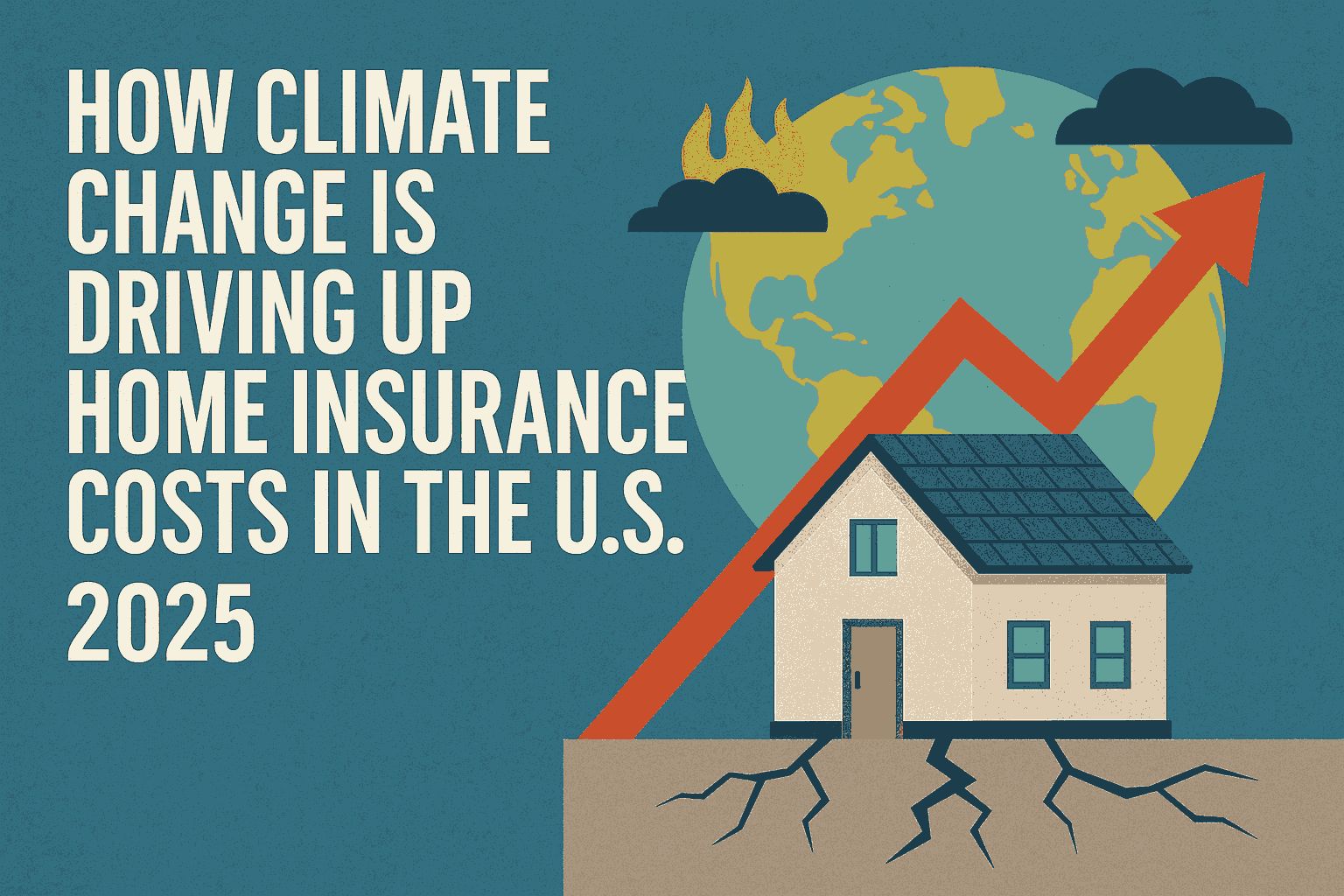For most American homeowners, insurance used to be a box you checked and forgot about—until disaster struck. But that’s no longer the reality(How Climate Change Is Driving Up Home Insurance Costs in the U.S.). In 2025, climate change is reshaping not only the weather but the way home insurance works. Rising premiums, shrinking coverage, and risk reassessments are hitting policyholders in nearly every state.
If you’ve opened your renewal notice this year and gasped at the cost, you’re not alone. Across the U.S., insurers are pulling back from high-risk areas, raising rates sharply, and changing how they evaluate the very idea of “home safety.”
Let’s take a closer look at what’s happening—and why.
A Growing Risk Landscape
From Florida’s coastline to California’s hillsides, the number of properties considered “high risk” has surged. Events once labeled as rare—such as back-to-back hurricanes or megafires scorching entire towns—are becoming part of the new normal.
Insurance is, by nature, a business of calculated risk. Providers crunch data, predict odds, and charge accordingly. But when disasters become unpredictable, their models break down.
In 2024 alone, the U.S. saw over $100 billion in insured losses from natural catastrophes. That’s the third year in a row breaking that threshold.
Here’s what’s pushing the numbers:
- Wildfires: Extended droughts and dry winters are leaving vegetation tinder-dry. States like Oregon, Arizona, and Colorado are now facing fire seasons that stretch half the year.
- Floods: Warmer oceans mean more intense storms and higher rainfall. Flash floods are hitting places that rarely saw water damage in the past.
- Hurricanes: The Atlantic hurricane season is starting earlier and lasting longer, with more storms reaching Category 3 or above.
- Severe storms: Tornadoes and hailstorms are becoming more frequent and more widespread—even in regions where they weren’t a concern a decade ago.
What This Means for Your Premium
Your home insurance premium is based on several factors, including your property’s location, construction, replacement cost, and claim history. Climate change affects all of these.
Location-Based Risk
If you live near a floodplain, wildfire zone, or coast, insurers may increase your rates—or exit the market altogether. This isn’t just happening in rural areas. Suburbs and metro regions are feeling the pinch too.
Reinsurance Costs
Insurance companies don’t absorb all losses themselves. They buy “insurance for insurers,” called reinsurance. As climate-related disasters rise, reinsurers are raising their prices. Those costs get passed to the homeowner.
Policy Changes and Deductibles
To stay solvent, some insurers are offering less coverage or higher deductibles for certain events. For instance, fire damage may now carry a separate deductible. Others are excluding wind or water damage unless you purchase additional riders.
States Seeing the Biggest Impact
Some parts of the country are experiencing these changes more acutely:
- California: Several insurers paused new home policies altogether due to fire risk.
- Florida: Premiums rose by over 30% in one year, and major carriers have exited the market entirely.
- Louisiana and Texas: Rebuilding after back-to-back hurricanes has strained both insurers and policyholders.
- Northeast and Midwest: Flash floods and unseasonal snowmelt have made these areas harder to underwrite than before.
What Homeowners Can Do
Facing rising costs doesn’t mean you’re powerless. Here are steps homeowners can take to stay protected and potentially limit premium hikes.
1. Mitigate Property Risks
Insurers reward prevention. Consider:
- Installing fire-resistant roofing or siding
- Elevating HVAC systems in flood-prone areas
- Adding storm shutters and roof tie-downs
- Using smart water leak detectors
Some companies offer premium discounts for documented improvements.
2. Review Your Policy Carefully
Understand exactly what is—and isn’t—covered. Ask your agent:
- Do I have separate flood or wildfire coverage?
- What are my deductibles for different risks?
- Are there any policy exclusions or caps I should be aware of?
3. Shop Around
Loyalty doesn’t always pay in this market. It’s wise to get quotes from multiple providers every year. Some regional carriers or mutual insurers may offer more stable rates.
4. Bundle When Possible
Bundling your home and auto policies with the same provider can offer discounts. It also gives you more leverage if a claim dispute arises.
5. Consider a Higher Deductible
If your home is well-protected and you have emergency savings, a higher deductible could reduce your premium significantly.
Insurance Gaps and the Government’s Role
One major concern in 2025 is the growing number of underinsured or uninsured homes. When private insurers pull back, homeowners often turn to government-backed programs like the National Flood Insurance Program (NFIP). But these programs have limits—and aren’t always financially stable.
Lawmakers are debating whether federal intervention is needed to create climate risk pools or incentivize insurers to stay in high-risk regions. Until then, homeowners bear much of the burden.
Looking Ahead
Climate change isn’t a future threat—it’s happening now. And its fingerprints are all over your next insurance bill.
In the years ahead, we’re likely to see:
- Smarter risk models using AI and real-time weather data
- More granular pricing based on neighborhood-specific data
- A shift in homebuyer decisions based on insurance availability
Homeownership in America is entering a new phase—one where climate resilience may matter just as much as square footage or curb appeal.
Final Thoughts
Home insurance isn’t just a line item anymore. In 2025, it’s a moving target influenced by climate trends that few predicted just a decade ago. For homeowners, the smartest move is to stay informed, proactive, and ready to adjust.
Pay attention to how your insurer is adapting to this new world. Because like it or not, climate change is now part of every home insurance conversation in the United States.
